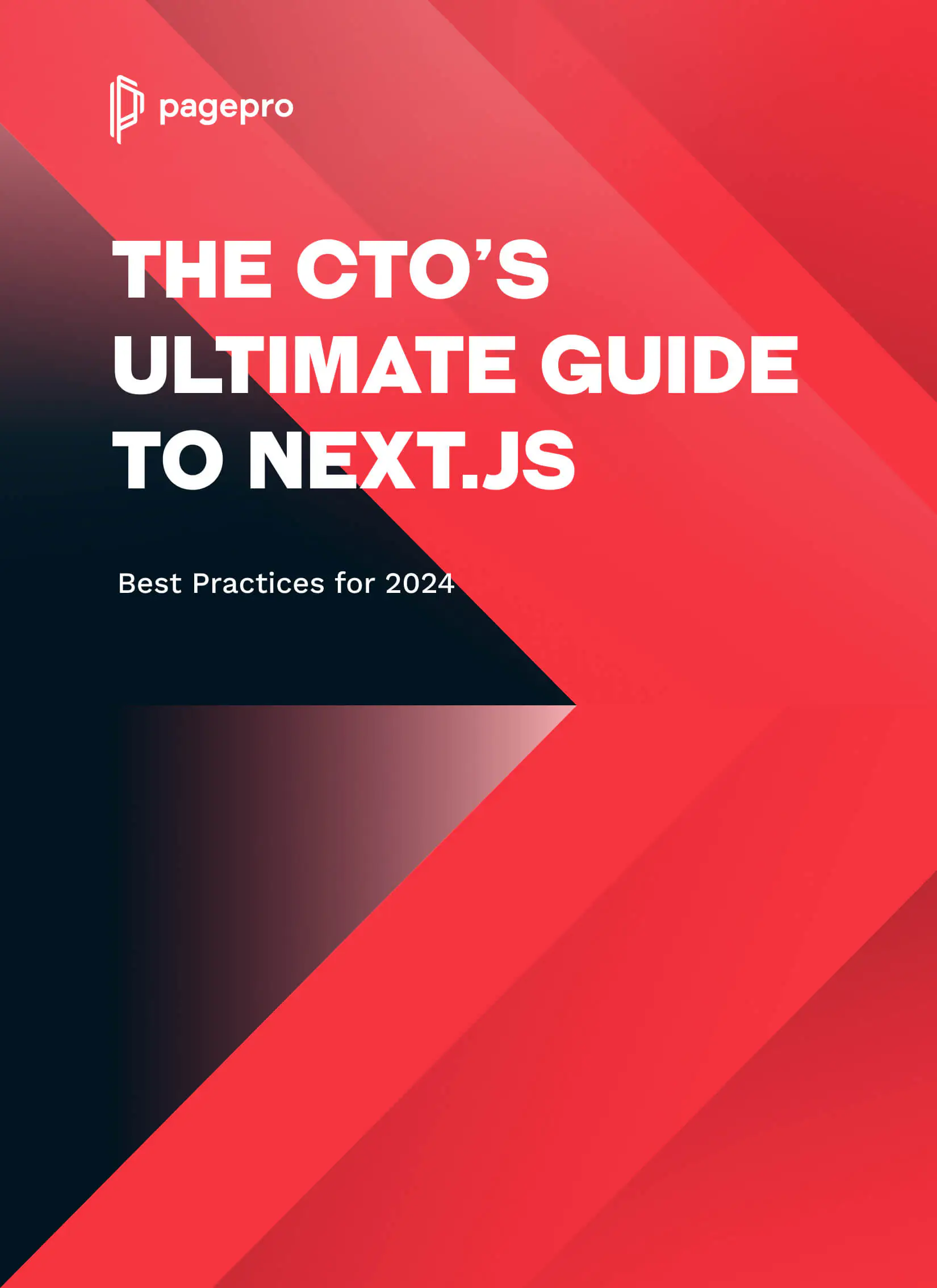How To Build a Mobile App Product Specification
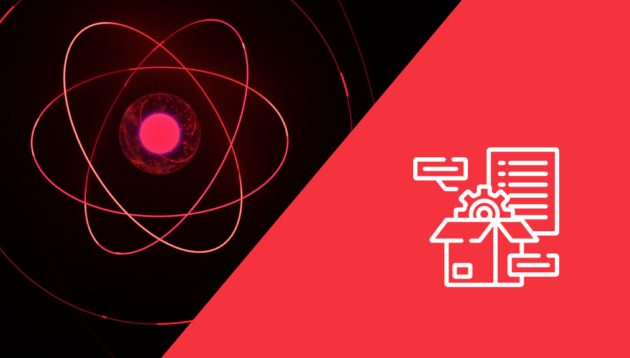
Intro
Mobile app product specification is a crucial part of mobile app development.
Imagine that you got an amazing idea for a mobile application, the one that will change everything! You find a developer that will create it for you. In your mind, it’s beautiful – white and blue with little bubbles all around. The user knows exactly how to use all the options. You’re smiling – this time you thought about everything.
And then this day comes – you can see your app for the first time.
And… that’s weird – in a way, it is your app, but it doesn’t look like you wanted. It’s grey and black and there are no bubbles!
But in one thing you’re right – you thought about everything. The problem is – you only thought. And no one can read your mind.
That’s why you need a mobile app product specification – to avoid situations like this. But also to be on the same page with the rest of the team, spend less time and money during the process and avoid the bugs.
The key is to provide a clear picture of the scope of work to help the mobile app development company make a better assessment of the time and effort that’s required for the project.
Preparing a mobile app requirements document is one of the steps in creating a perfect product.
What is a mobile app product specification
A mobile app product specification is a detailed technical documentation containing information about the app features, goals, and technical requirements of the product.
The main goal of this document is to provide a foundation for a successful product. Based on it, the entire project development proceeds and aligns the development team with the owner’s vision.
It also contains information such as acceptance criteria for the project (helpful with building a project scope), project success metrics, user requirements, and business requirements.
A well-prepared specification prevents you from developing unnecessary functions and decreases the rework, which often has a huge impact on the total cost of software development.
There are some important points that every specification should cover.
Brief description of the app
A brief description is like an introduction to your app. It identifies the purpose of the product, the ‘look and feel’ of an app, and the main features you want to deploy.
If you are about to work with a software house or external agency, you should cover some information about your company – what you are working on, how long are you prospering on the market and what are your main goals. Also, if you have any similar products or if the app is a part of the biggest project, you can describe it here.
Then, to create a clear vision of the product, focus on the one problem your customer has, that your app will solve.
The description should cover the terms and definitions of the document, and the expected time it will take to develop it.
Also in this section, you can add all the information that you got from the market research.

Business context
To describe the business context, focus on a reason why even building mobile apps is necessary for your business, and the outcomes you expect. The benefits should be SMART (specific, measurable, achievable, relevant and time-bound).
Concentrate on how your app will differentiate from other, similar applications, and why would customers choose yours above the others.
It is time to define how your product will generate revenue. Here are some main strategies of monetization in mobile apps:
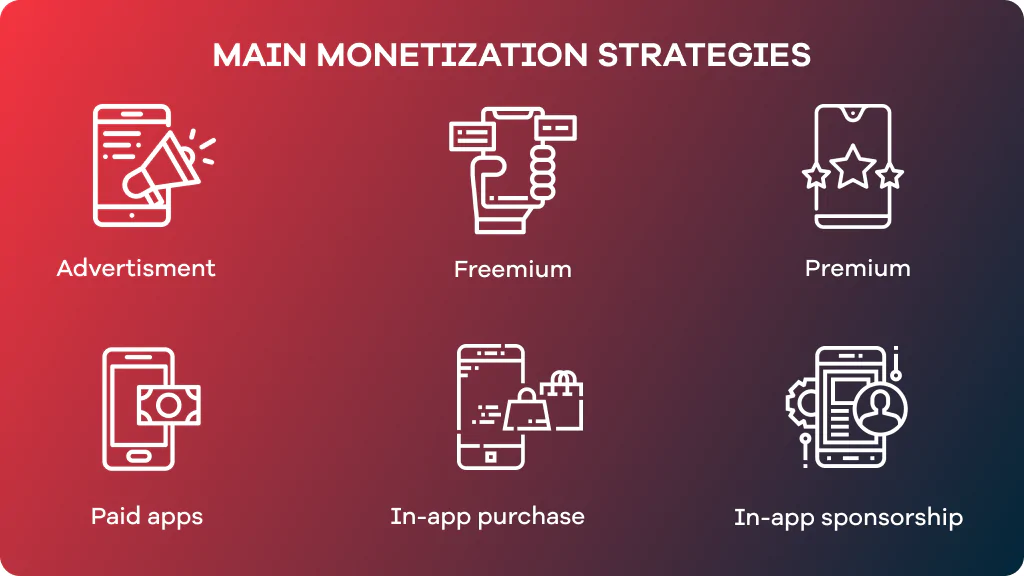
Advertisement
Earning from selling advertisement space in your app. The main benefit is that your app can stay free, so you can be sure you will have more installs.
Freemium (Gated features)
The app can stay free and have some advanced, paid features. Remember to carefully choose both free and paid features. If you offer too few features, your customers won’t become engaged. If too many, users won’t choose to pay.
Premium (Subscription)
In this model, the users are allowed to see some specified content, but they will have to pay to see more. One of the main benefits of this model is an automatically renewed subscription, so you will have a continual flow of revenue.
Paid app
Those apps can’t be downloaded for free, but are offered to be purchased. This is in a way, a typical form of paid services. Before you choose this model, check out competing apps – customers usually prefer to start with the free version if they have the option to use just a core feature.
Usually, this model is chosen by recognizable brands, like Minecraft – a popular game, that prepared a mobile version.
In-app purchases
This model turns your app into a sales channel. You can sell both physical and digital products. It helps to make comfortable profits with the lowest amount of risk.
In-app sponsorship
Here you cooperate with ad partners who reward your users for taking specific action. It’s popular in different games, like Block Puzzle Guardian, where you can i.e. gain some more points for watching longer ads.
During describing a business context it’s crucial to set the main measurements, that will help stakeholders understand when your project achieves success. It can be a revenue within X months or the number of cross-sales in a chosen time. This is also a moment to get interested in different payment system options.
The next important step is to define the business risks – possible situations that can badly affect your company. Estimate the probability of the risk and how it will impact the business. Once it’s done, plan your actions to control, measure and mitigate the risks.
Quick poll
Which monetization strategy would you choose?

User stories
User stories put the customer at the heart of your project. They are informal explanations of the features, written from the end user’s perspective. By arranging them, you can form a product roadmap that defines the features you should implement and when.
They help developers involved in the app development process, to understand the scope of work and user flow. This is an essential part of software requirements specification that bridges the communication and negotiation between the development team and app owners.
They bring many benefits to the project:
- Help to keep the focus on the user
- Enable collaboration in the team
- Drive creative solutions
To write the user stories you should follow the simple structure of the sentence:
As a user, I want [goal], so that [benefit].
When we started to work on the app for Veygo, they’ve prepared a list of user stories, which help us to understand all the features. Here are some examples of what they delivered:
- I want to tell you when my ongoing lessons are so that I can be shown personalized content
- I want to inform you when my theory test is booked so that I can be served a daily quiz

Build your mobile app with top developers
User persona
User personas are an integral part of defining mobile apps. It’s based on a deep understanding of regular user requirements and creates a detailed description of the target audience.
User persona should be prepared based on the real data collected during the market research. It starts with choosing the group of potential users and interviewing or observing them. Then look for the patterns in their behaviour. Based on this put similar characters together, add some context, behaviors, and needs.
The description of the user persona should contain information about the target users such as:
- A photo
- Name, age and gender
- Description of what the person does in real life;
- Experience in using similar apps
- User’s goals
Mind that sometimes iOS users (or apple app store users) behave and spend money on mobile applications differently than f.e Android users, so the decision-making process could be sometimes different based on operating system versions.
Understanding target users is fundamental in product creation. The main benefits of creating user personas are:
- Gaining a perspective similar to the users
- Identifying with the potential users
- Provide directions for making design decisions
- Helping prevent self-referential design

Functional specification
The functional spec should contain all the requirements that the app should operate. There are different types of requirements, such like:
Technology stack
Language, platform, framework, and other tools used for the app development. If you are not sure what will work best, we will prepare the comparison for you and explain all the possibilities, just like we did for Novus Bank.
Their team was hesitating between PWA, React Native, and Native development, so we made them an overview of pros and cons of each approach.
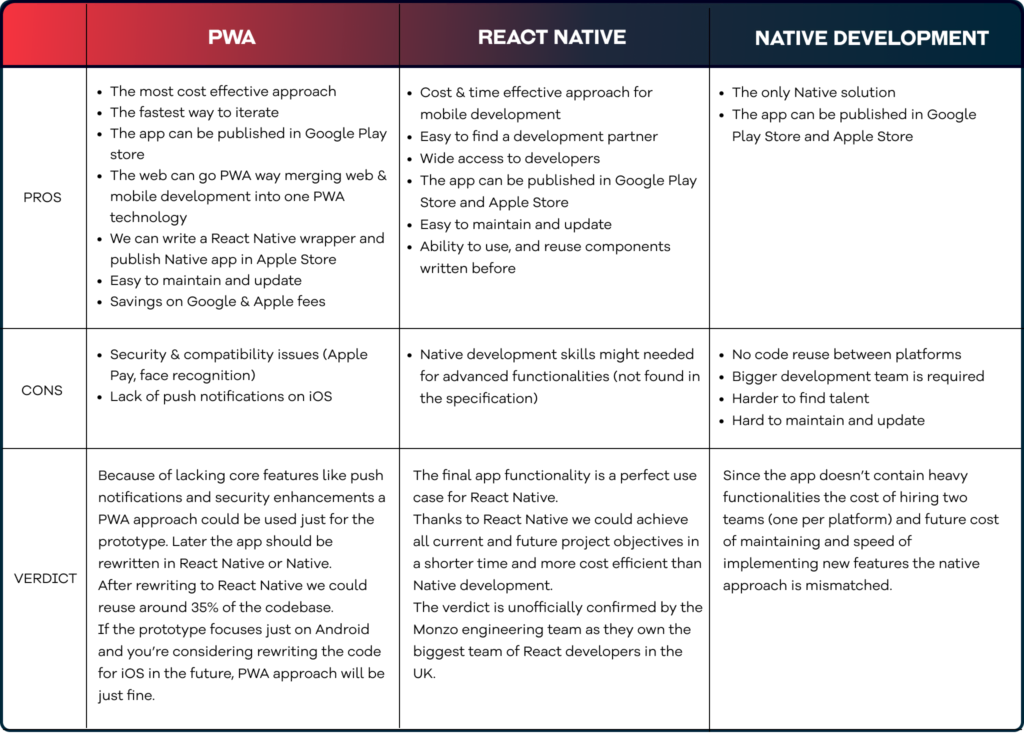
Functional requirements
A list of the features (such as push notifications, navigation, geolocation feature for rental platforms, etc) that developers can build to enable users to complete tasks.
Subsystem requirements
Requirements for your app from the perspective of software and hardware subsystems.
Business rules
As every business is subject to laws, policies and standards, they have to be included in the spec. The most popular are corporate policy and government regulations.
Data requirements
Managing the data is an inseparable part of developing a mobile app, and so you need to divide how you will protect and manage our customers’ data.
Interfaces
This part is needed to ensure that the app will communicate with users and software systems.

Product design
The appearance of the app is often the decisive factor for your customer, so you should spend enough time planning and developing it.
As you already know User Stories and choose all the interfaces you would need, choosing the right colours, fonts and other elements would be a little easier.
If you want to learn more about UX and UI design in mobile app development, check out our latest article.

SUMMARY OF Helpful questions
Here’s a list of helpful questions that will guide you through the process of creating your specification:
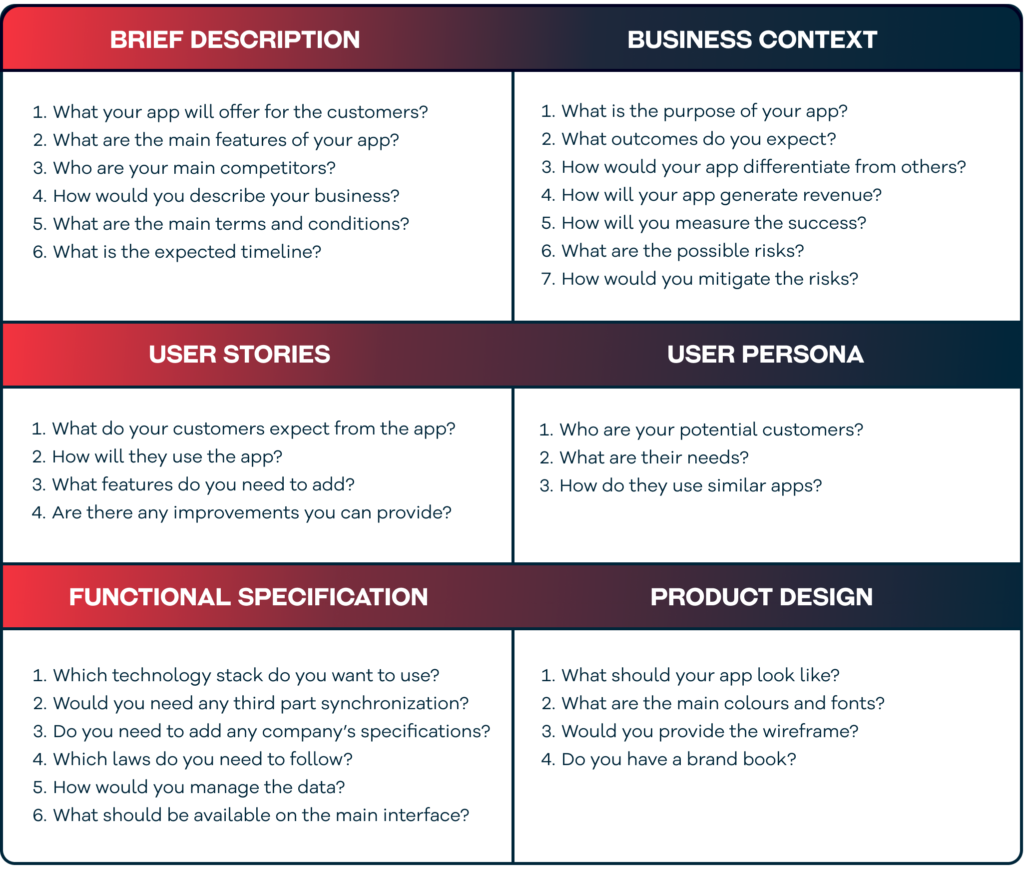
Next steps
Working on a mobile app product specification requires deep market research and a lot of technical knowledge. We understand that some of the information that is required won’t be easy to establish, so we’re ready to help you to go through the process.
During the meeting, we will explain all the options and help you choose the best way for the process.
Once we have all the information we will be ready to prepare an estimation showing you all the steps and time require to complete.
Below you can see an example of the estimation process for one of our customers:


WRAP UP
Creating a clear mobile app specification is highly important in the development process. First and foremost it clears your idea for the developers, but also help you to establish all the goals and measurements for the process.
Build your mobile app with top developers
Read more
How to build a project for mobile app development
UX and UI design in mobile app development
How to build the MVP? A step-by-step process.
Benefits of using React Native in mobile app development
What Are Super Apps And How To Make Them Work?
Mobile App Development Cost Breakdown – From Concept to Launch
